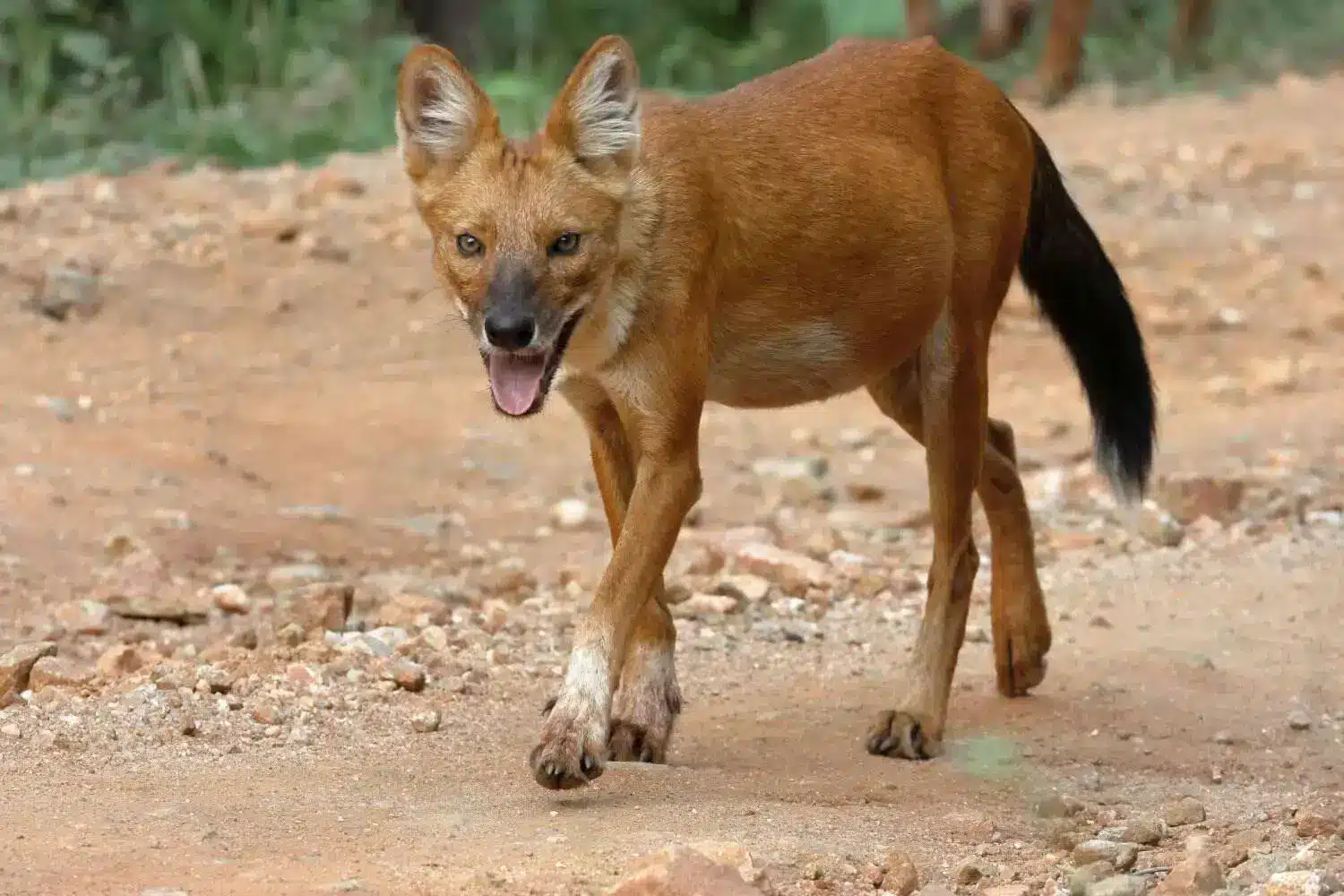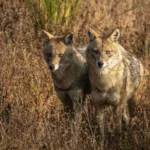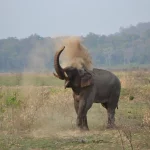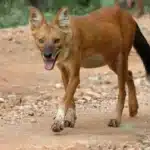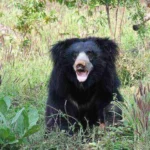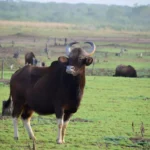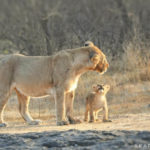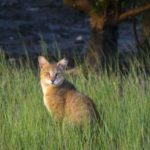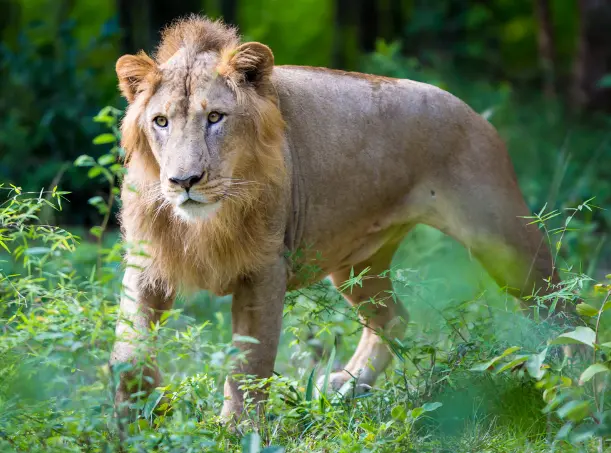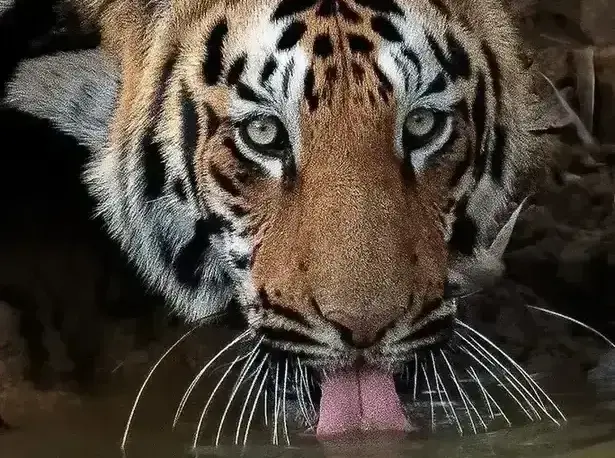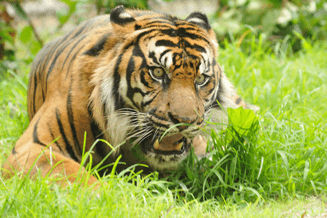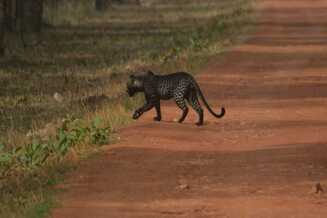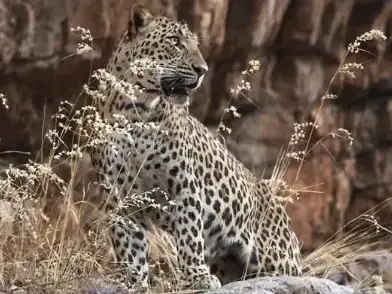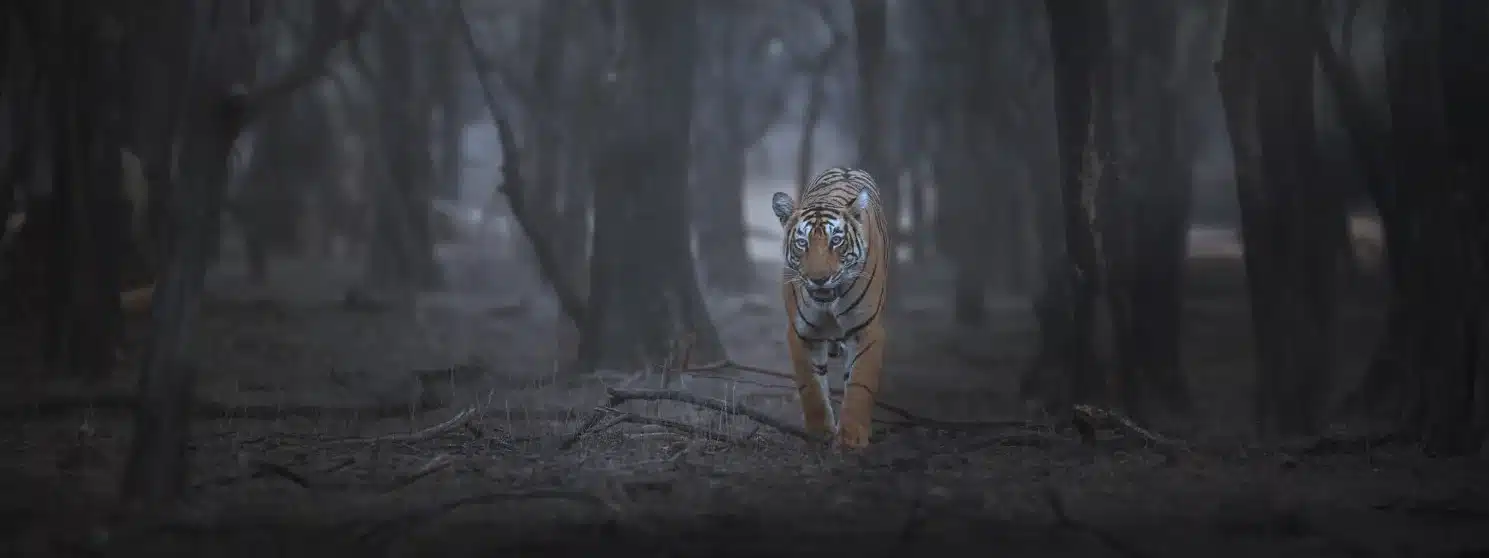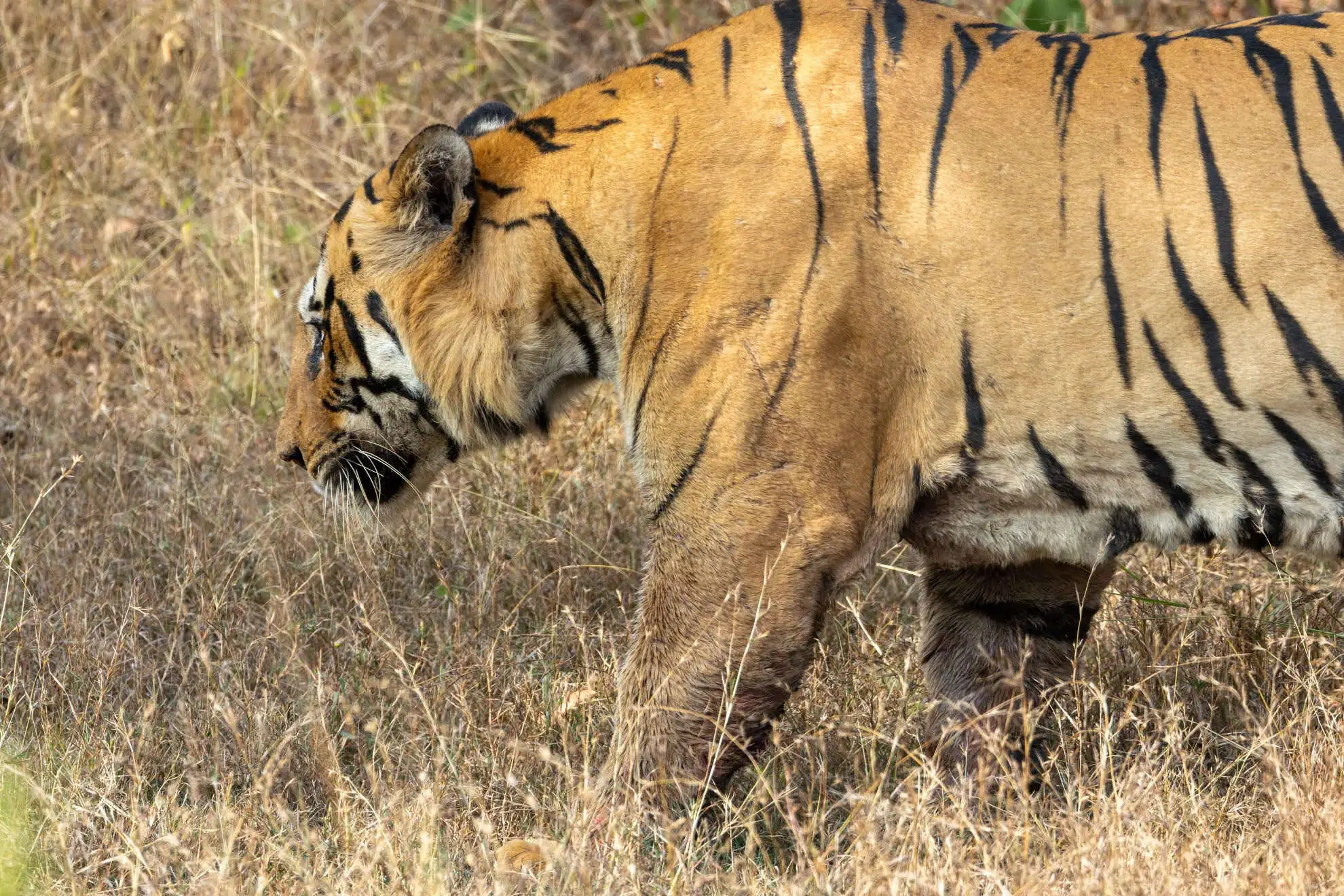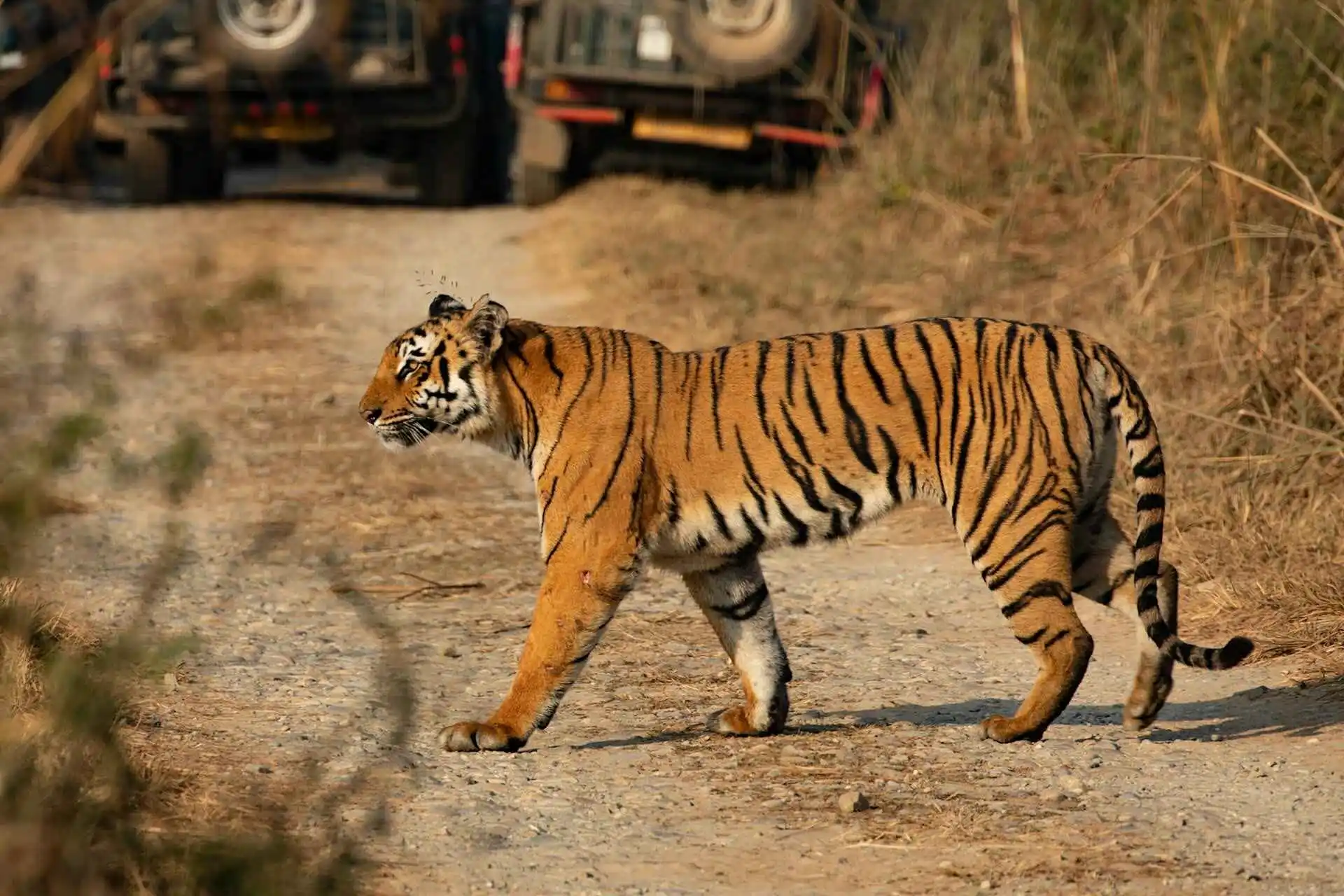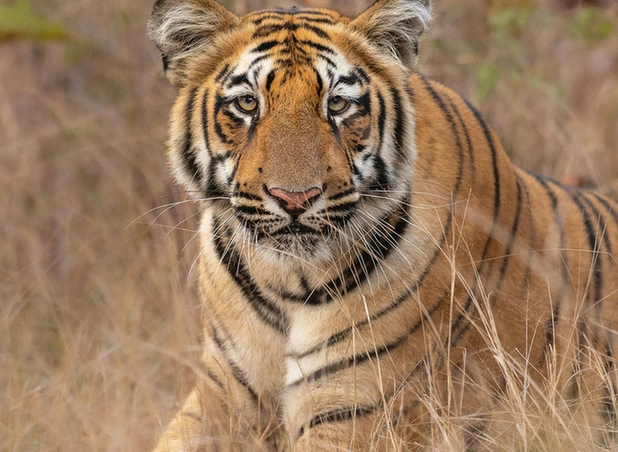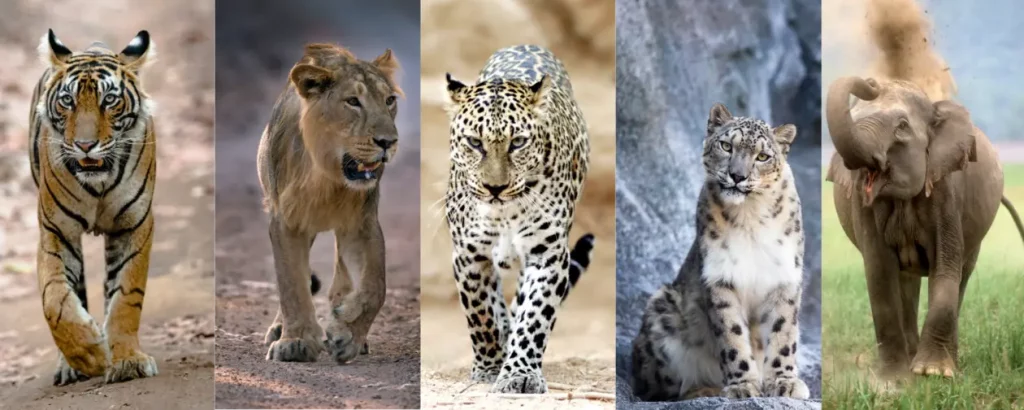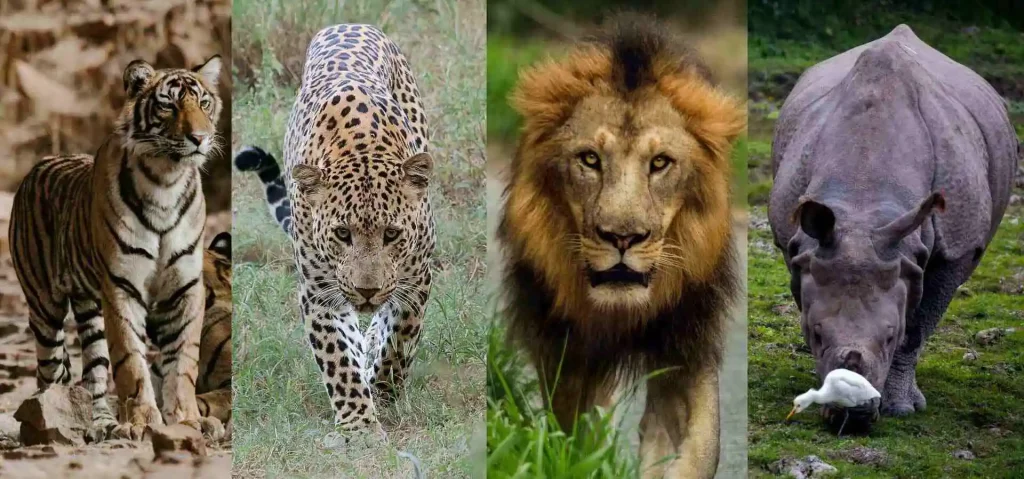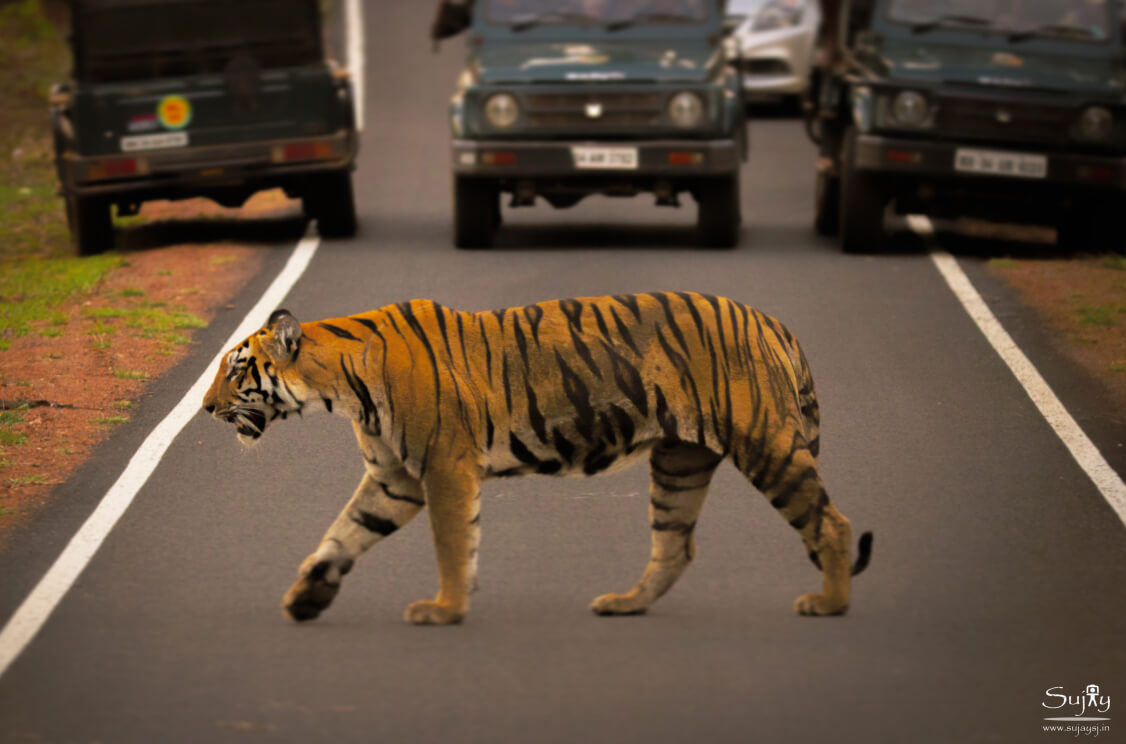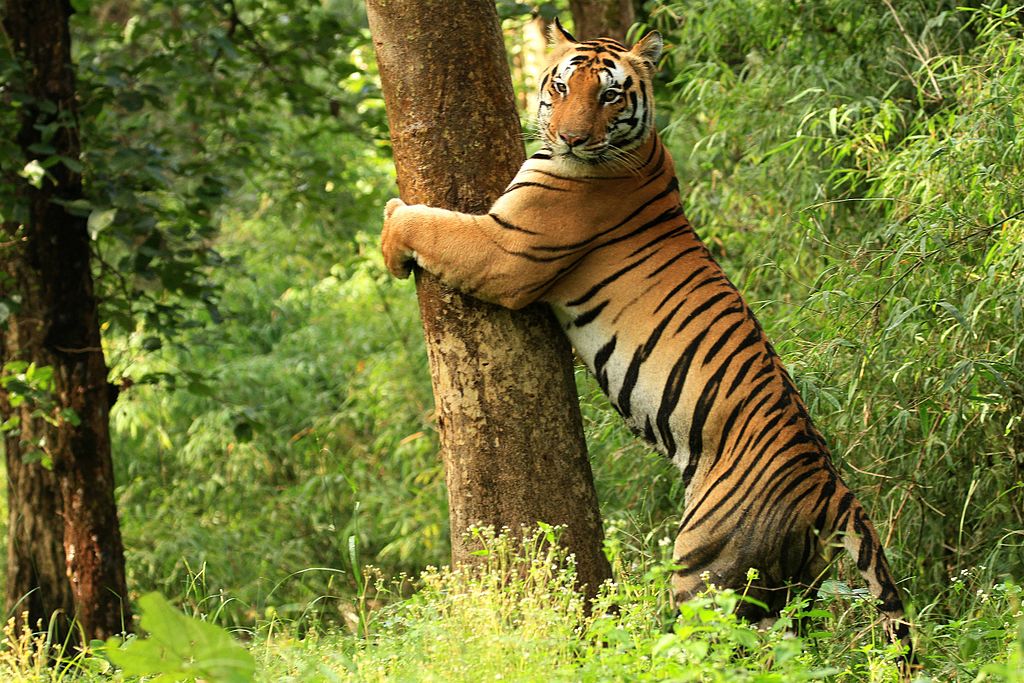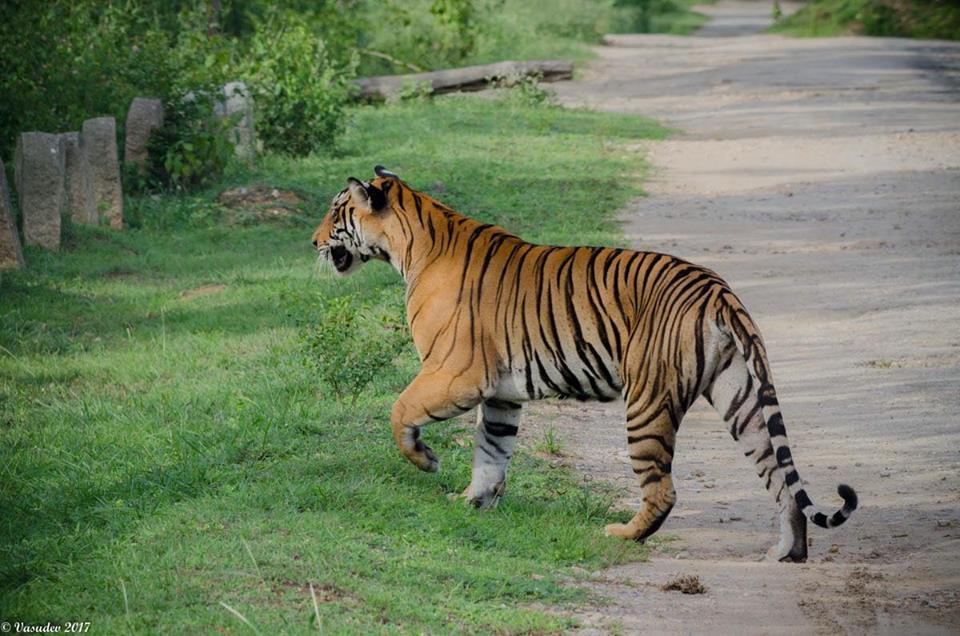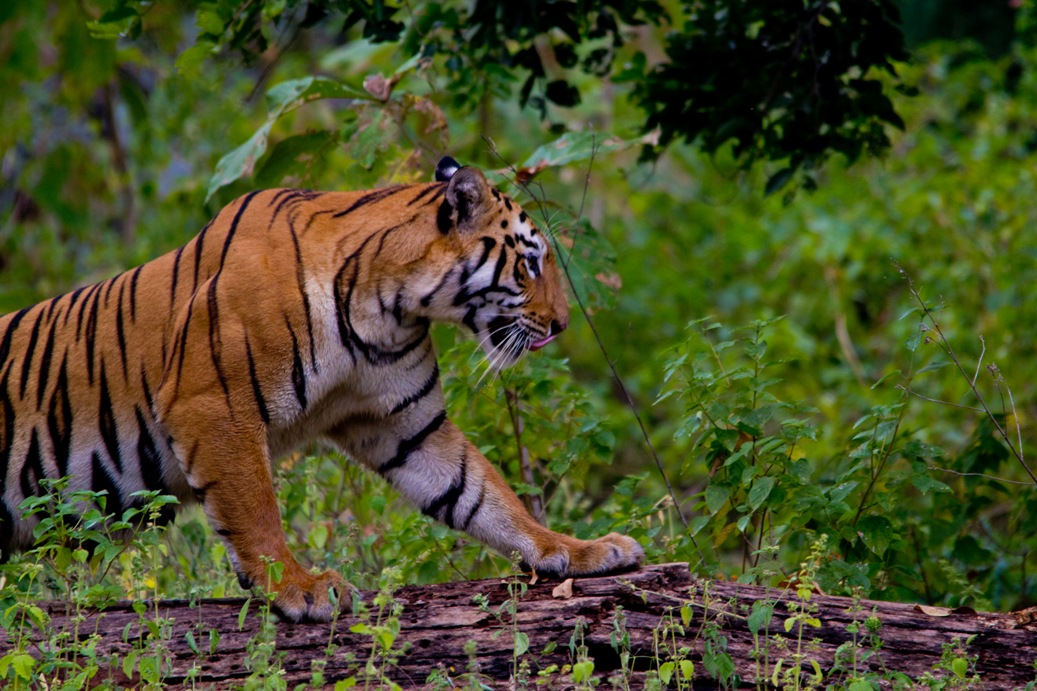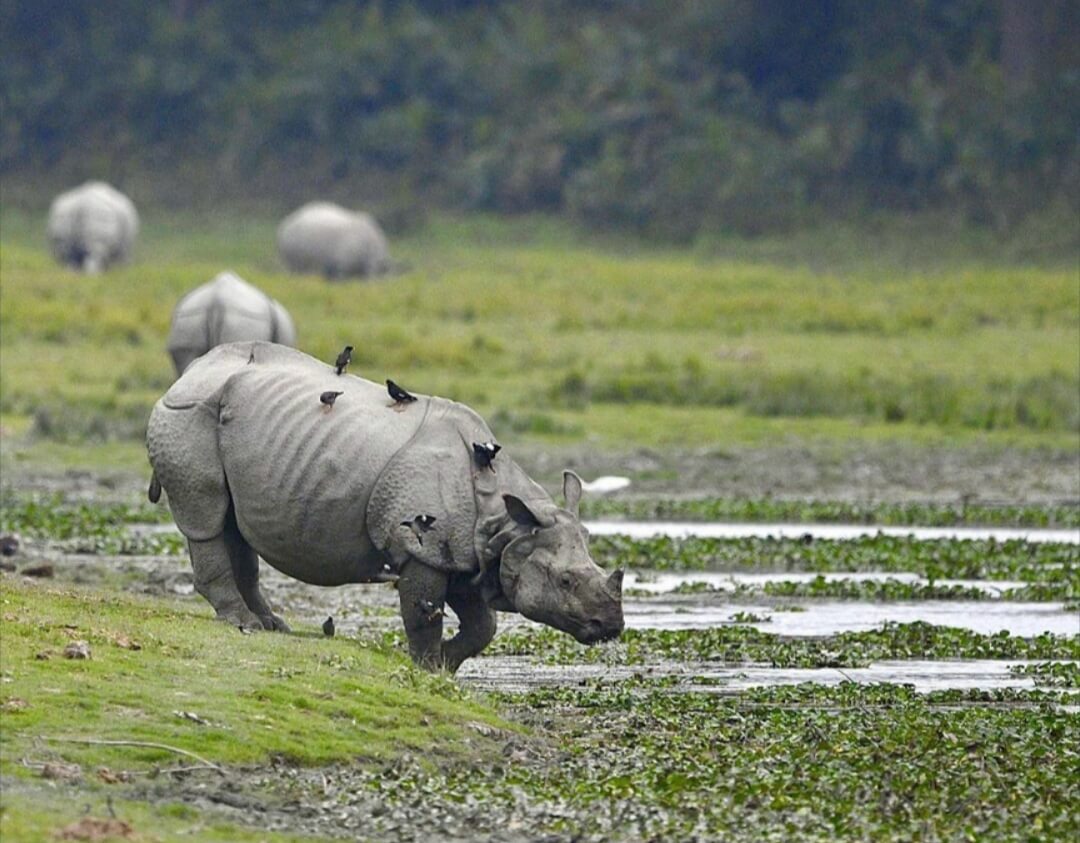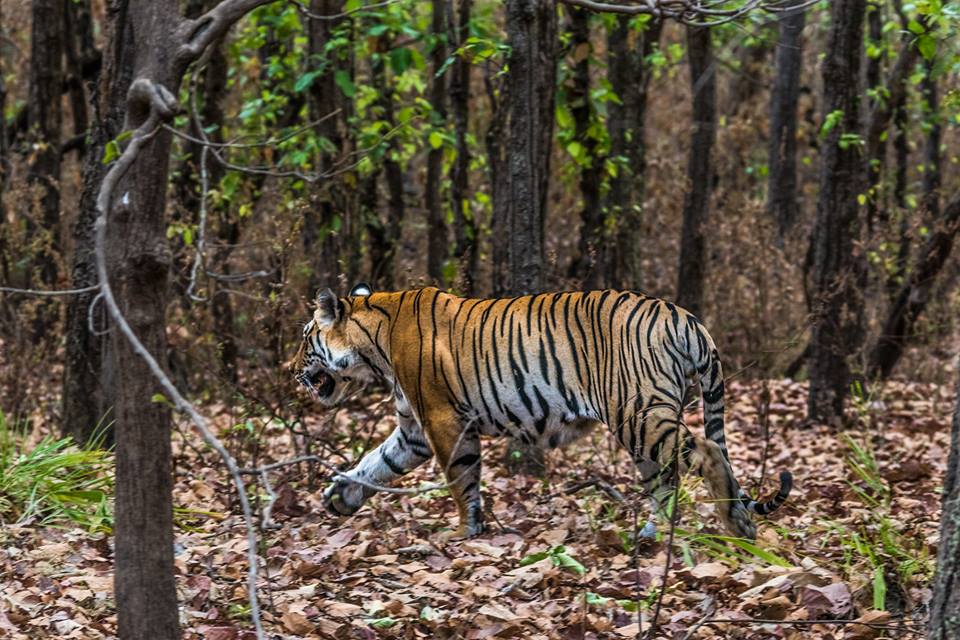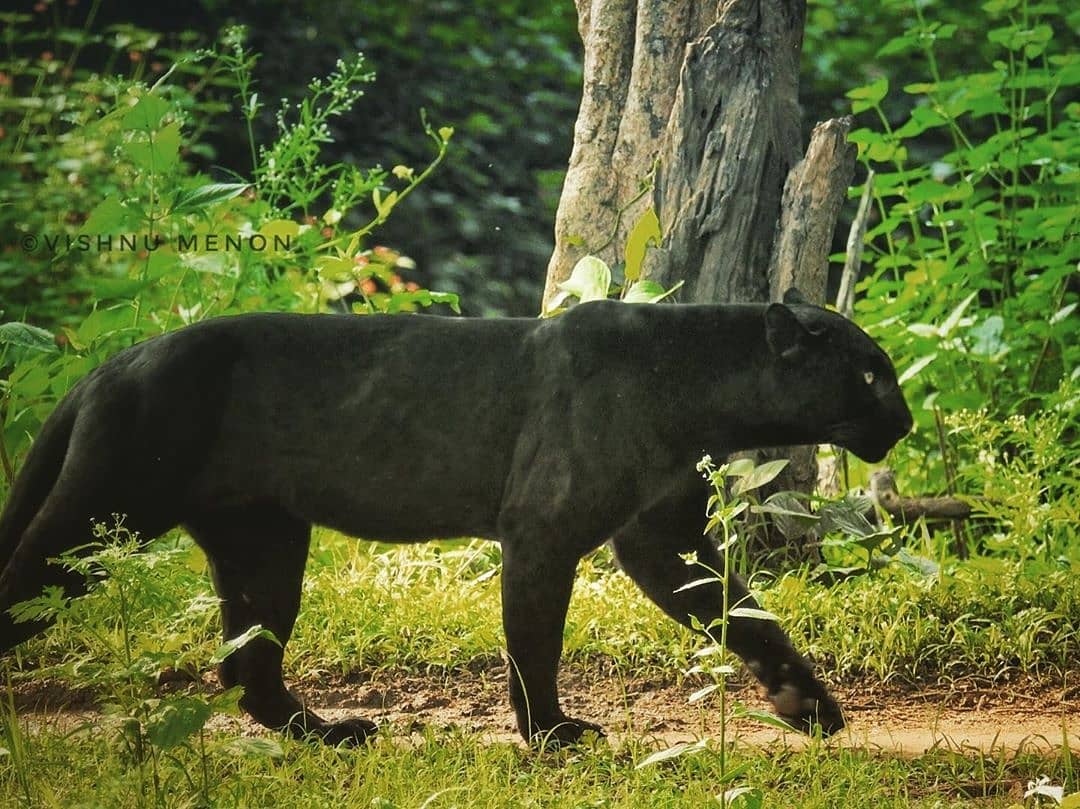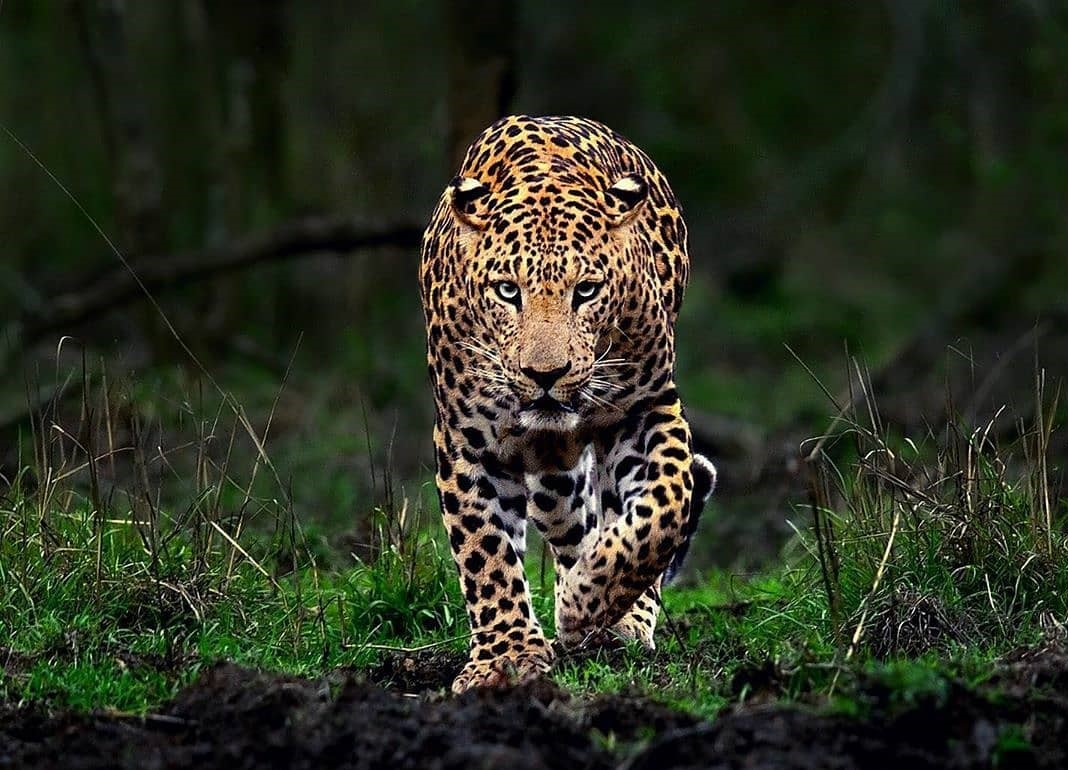The Elusive Predator of the Jungle
The dhole (Cuon alpinus), also known as the Indian wild dog, is one of the most fascinating yet lesser-known predators of India’s forests. Unlike solitary big cats like tigers and leopards, dholes are highly social and rely on teamwork to hunt and survive. These agile and intelligent hunters are found in forests, grasslands, and mountainous regions across India, though their population has drastically declined due to habitat loss and human conflict.
Once widespread across Asia, dholes are now classified as Endangered on the IUCN Red List, with an estimated 2,500 individuals left in the wild. Despite their importance in maintaining ecological balance, they remain one of the least studied carnivores.
Physical Features & Unique Adaptations
- Size & Build: Dholes are medium-sized canids, measuring 90 cm in body length, with a bushy tail around 40 cm long. They weigh between 10–20 kg, making them smaller than wolves but larger than jackals.
- Distinct Appearance: They have a reddish-brown coat, a white underbelly, and dark, bushy tails, giving them a fox-like appearance.
- Sharp Adaptations for Hunting: Dholes have strong jaws with more molars than most canids, allowing them to crush bones efficiently.
- Speed & Stamina: They are built for endurance and can chase prey for long distances without tiring.
Key Characteristics of Wild Dog (Dhole)
| Feature | Details |
|---|---|
| Scientific Name | Cuon alpinus |
| Average Length | 90 cm (body) + 40 cm (tail) |
| Weight | 10–20 kg |
| Lifespan | 10–15 years in the wild |
| Diet | Carnivorous (deer, wild boar, small mammals, birds) |
| Habitat | Forests, grasslands, mountains |
| Conservation Status | Endangered |
Habitat & Lifestyle
Dholes are adaptable and thrive in a variety of landscapes, including:
- Dense forests (Western Ghats, Central India, and Northeast India)
- Open grasslands (ideal for group hunting)
- Mountainous terrains (up to 5,000 meters in the Himalayas!)
These wild dogs are apex predators, meaning they play a crucial role in maintaining the ecosystem by controlling herbivore populations. They are diurnal hunters, active mainly during the day, unlike nocturnal predators like tigers and leopards.
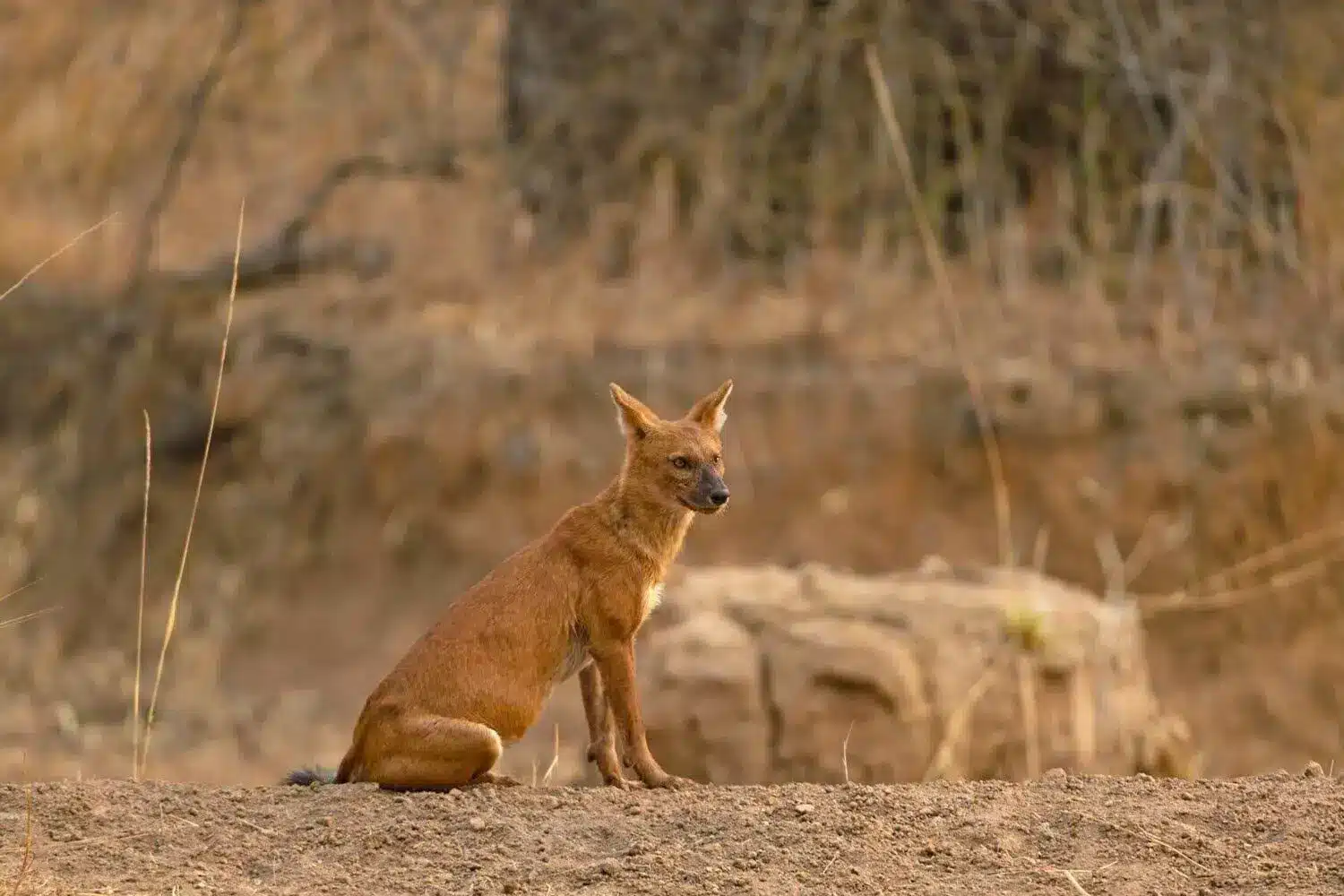
Diet and Hunting Strategies
Dholes are strict carnivores and have an exceptional hunting strategy that sets them apart from other predators.
- Primary Prey: They primarily hunt deer species (spotted deer, sambar, and barking deer), wild boar, and even gaur calves.
- Pack Hunting: Unlike solitary hunters like tigers, dholes hunt in coordinated packs of 6–12 members, using exceptional teamwork.
- High Success Rate: Their persistence hunting technique allows them to chase prey for kilometers, wearing it down before launching an attack.
- Rapid Feeding: Dholes eat their prey while it’s still alive, unlike big cats that suffocate their prey before consuming it.
Social Structure & Behavior
Dholes are among the most social wild canids, living in tight-knit packs that operate like a family unit.
- Cooperative Living: Unlike wolves, there is no strict hierarchy – all members share responsibilities.
- Unique Communication: Instead of howling like wolves, dholes whistle, chatter, and squeak to communicate during hunts.
- Playful Nature: Dholes are highly playful and affectionate within their pack, often engaging in games and grooming each other.
Where to Find Them – Top National Parks
If you want to see these elusive predators, visit these wildlife reserves:
- Kanha National Park (Madhya Pradesh) – One of the best places to spot dholes.
- Bandipur National Park (Karnataka) – Home to several dhole packs.
- Nagarhole National Park (Karnataka) – A great place to witness dhole pack hunting behavior.
- Periyar Wildlife Sanctuary (Kerala) – Dholes thrive in its dense forests.
- Pench National Park (Madhya Pradesh – Maharashtra border) – Another prime location for dhole sightings.
Conservation Challenges & Efforts
Threats to the Dhole Population
- Habitat Loss: Deforestation and human encroachment have significantly reduced their habitat.
- Competition with Big Cats: Tigers and leopards often kill dholes to reduce competition.
- Human Conflict: Dholes are sometimes seen as a threat to livestock and are killed by farmers.
- Lack of Awareness & Research: Unlike tigers and elephants, dholes receive very little conservation attention.
Ongoing Conservation Efforts
- Protected Areas & National Parks – Most dhole populations now survive in wildlife reserves.
- Research & Awareness Campaigns – Studies are being conducted to understand their behavior and conservation needs.
- Anti-Poaching Measures – Efforts to prevent illegal hunting and habitat destruction are in place.
Despite these efforts, dholes remain one of the most endangered carnivores in India, requiring urgent attention.
Interesting Facts About Dholes
- Dholes can jump over 2 meters high, making them excellent escape artists!
- They are one of the only canid species that don’t bark – instead, they whistle!
- Unlike wolves, dholes rarely fight within their pack, maintaining peace through strong social bonds.
- A dhole pack can bring down prey 10 times their size, like a fully grown sambar deer!
- Dholes are known as “India’s Whistling Hunters” because of their unique high-pitched calls.
- They can survive in diverse environments – from tropical forests to snowy mountains.
- Dholes have partially webbed feet, which help them run efficiently on muddy or wet terrain.
Despite their remarkable intelligence and teamwork, dholes are one of the most overlooked predators in India’s wildlife conservation efforts. Their survival depends on increased awareness, habitat protection, and better research initiatives. Next time you visit a national park, keep an ear out for their distinct whistles—you might just spot a pack on the hunt!

